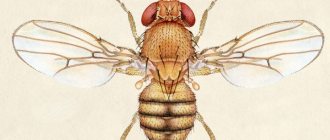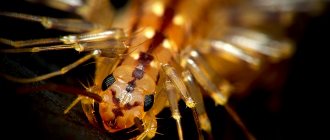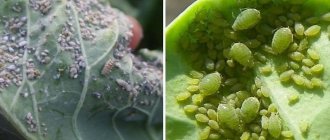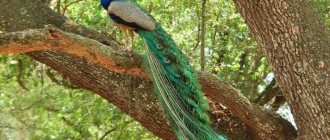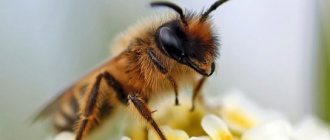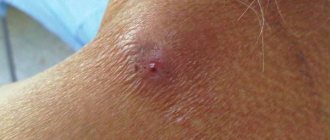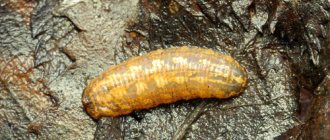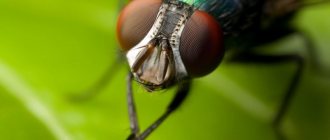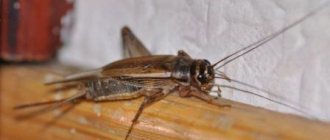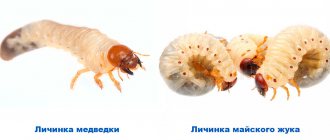- Drosophila fruit flies - a brief description
- Midge development
- Sex differences in a nutshell
- Laying eggs
- Pupation of the Drosophila fly
- Brief life of an adult Drosophila
- How to get rid of Drosophila flies An important factor in the destruction of Drosophila melanogaster
- Find and neutralize
- Prevention is the best measure
- Funnel trap
Everyone, both urban and rural residents, has encountered fruit flies. It would seem that what is the problem, let them fly - they live short, do not bite, are almost harmless. But there are situations when getting rid of such crumbs is more difficult than getting rid of cockroaches, so it is better to be prepared.
Drosophila fruit flies - a brief description
There are many small flies in nature, more than 2000 species, and they are sometimes confused with other flies, although fruit flies have a number of features so as not to be confused with fungus gnats or sewer midges.
Table of differences between fruit flies and other small midges:
| Insect name | Photo | Preferred habitat | Features of “appearance” |
| Sewer flies (butterflies) | Climbing out of the sink, bathtub | They seem fluffy. Black, wings clearly visible, widely spaced | |
| Fungus gnats | Wet soil in flowerpots (plants begin to wither) | Inconspicuous, do not bite | |
| Clothes/food moth | Wardrobes and chests of drawers containing natural fabrics or furs. For food moths, reserves of cereals and seeds are interesting | Grayish insect, leaves gray “pollen” when touched | |
| Mosquitoes | Available everywhere, especially where it is warm and damp | Places with food remains, garbage, rotting fruit | |
| fruit fly | They bite, squeak, get in your eyes | They do not buzz, sit and fly quietly, “impressively”. They fuss only around the food source. |
Drosophila are called differently depending on where they were found in a given area. They are most often found in spoiled fruits, which is why they got their name fruit fly. And because they simply adore sour, young wine, wine vinegar is a “vinegar” or “wine” fly.
Drosophila melanogaster prefers plant debris, juice, and rotting fruit. And the larva does not disdain microorganisms. The larvae develop in semi-rotten raw materials - neither a solid nor a liquid consistency is suitable for young larvae, but a viscous one is excellent.
Drosophila melanogaster is a tiny dipterous insect. Available almost anywhere in the world.
It enters human habitation by crawling into cracks or open holes when it smells the appetizing aromas of fruit rot.
It is also carried by pets on their fur. They are often brought along with vegetables and fruits from the store, on the soles of shoes.
Treatment of bites
How to treat a midge bite and whether it is worth doing depends on the degree of symptoms. First aid consists of treating the wound with an alcohol-based solution or disinfectant. Subsequent measures are aimed at eliminating itching, reducing redness, relieving pain, and avoiding infection. How long it takes for bites to heal depends on the characteristics of the body and the measures taken aimed at recovery. In the absence of an allergic reaction, home treatment with traditional medicine is sufficient. Otherwise, you cannot do without consulting a doctor. Self-prescribing treatment with antibiotics and hormonal ointments is contraindicated.
Allergy to midge bites
Treatment of a midge bite is carried out according to different schemes, which depend on the type of skin changes.
| Algorithm of actions | |
| First aid after a midge bite |
|
| Eliminate rashes and relieve swelling |
|
| How to treat itching |
|
| Treatment of infected wounds |
|
| The appearance of black pus in wounds | Seek help from a medical facility |
| First aid for a midge bite in the eye |
|
Laying eggs
Drosophila eggs look like thin cylinders, up to 0.6 mm. They are clearly visible against a dark background. One female is capable of laying more than 1,500 eggs in her life (up to 20 eggs in each clutch). To lay eggs, it selects fruits with a soft consistency. They can also lay their offspring in drains.
The environment in which the larva hatches determines the future of the adult fly. The larva must eat as much as possible during this period, accumulating a lot of nutrients. This will allow her to grow into a larger individual and significantly increase her chances of survival.
After hatching, the larvae crawl along the surface, then gnaw through the medium and remain inside until pupation.
Pupation of the Drosophila fly
The larvae crawl briskly around the environment, but no longer eat anything. Having found a suitable place, they stop moving, shrink and become like a barrel. All organs and tissues are destroyed, only the nervous system and gonads (organs that produce germ cells) remain, and the rudiments of the adult organs develop. The entire conversion process takes 4 days.
By the beginning of the 4th day, the pupa’s eyes are already clearly visible, which are initially yellowish (by the time they hatch, they become red), and the wings are increasingly visible. In the end, liquid accumulates inside the pupa, which breaks the dense cover, and the fly is freed. The “birth” of a fly occurs in the morning.
Interesting Facts
Drosophila is the most valuable organism for biological research, especially for genetics. The fly has been used as a model organism for various types of research for a century now.
The use of Drosophila for experimental research is due to its small size and short life cycle. In addition, it is an inexpensive individual for the processes of reproduction and breeding of even a huge number of insects. They are excellent for cultivation in laboratory conditions.
Mutants of individuals with any gene defects are available for a variety of experiments.
How to get rid of fruit flies
The crazy fertility of the fruit midge leads to the fact that it is enough to go away for the weekend and forget the ripe fruit on the table, so that in a couple of days the whole apartment will be covered with black clouds that will be everywhere, on all surfaces and crevices.
After the destruction of most of the insects, more and more hordes appear the next day. And each baby leaves behind not only many clutches of eggs, but also black spots of feces on everything where it sat. Therefore, the plan to combat the wine fly must be quick and effective, otherwise the war will drag on and the forces will not be on the side of man.
Plan for getting rid of fruit flies:
- Deprive them of any food source.
- Find and eliminate places where insects and midge eggs are located.
- Carry out preventive measures.
Fruit midges fly slowly, but they have excellent vision and are good at noticing fast or sudden movements, while calm, slow ones will not scare them away.
The midge suffers greatly from lack of moisture. Almost not afraid of frost, loves alcohol, especially wine and beer.
An important factor in the killing of Drosophila melanogaster
The most important and effective means in the fight against fruit flies is to deprive flies and larvae of food. This means that you need to remove any fruits, vegetables, sugary drinks, canned food, especially spoiled and spoiled foods.
Find and neutralize
Be sure to find places where adults and larvae are located. Wash everything, destroy spoiled items, put away bags of nuts, cereals, open jam and compotes or hide them in the refrigerator.
Kill fruit flies using chemicals or various baits. Large accumulations can be removed using a vacuum cleaner.
Prevention is the best measure
Those who have the habit of clearing everything from the table immediately after eating, storing food in airtight containers or the refrigerator may never encounter fruit flies or cockroaches.
The main condition for preventing these annoying neighbors is to remove all food and liquids, leaving it perfectly clean. Insects will not have anything to eat or where to lay eggs, and they will move to places with more hospitable owners.
Social structure and reproduction
Photo: Insect Drosophila fly
The Drosophila fly is an insect with a short lifespan. At sixteen degrees above zero, such animals live only ten days. For this reason, their body develops very rapidly; female fruit flies are able to lay eggs literally immediately after birth - on the second or third day. Female midges are very fertile. They retain their ability to reproduce throughout their lives.
The female lays eggs directly on fruits, vegetables, and their remains. The eggs are very small. Their length is no more than 0.5 millimeters. They have an elongated shape. At one time, a female Drosophila can lay up to eighty eggs. And over the course of a lifetime, the number of eggs laid by one individual can reach several hundred.
Interesting fact: A female fruit fly only needs one mating with a male to lay eggs several times. The fact is that this insect knows how to preserve seminal fluid for later use.
The development process and growth rate of larvae depends on their diet. After birth, the larvae live on the surface of the fruit. They can live in a semi-liquid environment without drowning thanks to special float chambers. The length of one larva is usually three and a half millimeters. Their body color is white. Some time after birth, the larva pupates, and after four days an adult emerges from the pupa.
Making your own fruit fly traps
Funnel trap
The simplest option is to place a fragrant bait in any container, and place a lid, watering can or cone on top, allowing insects to crawl inside but not crawl out. Seal the edges of the trap so that insects have only one entrance and no gaps.
When the trap is black with prisoners, they need to be destroyed. There can be many ways: add water (can be hot), heat it in the microwave for a minute, release it outside, put it in the freezer, etc.
Another trap option is with vinegar.
Pour a drop of wine or apple cider vinegar into the bottom of the container, add a pinch of salt, warm water and a couple of drops of dishwashing detergent. Mix everything and put it in a visible place
You can catch fruit flies with live beer, crushed ripe banana, sour compote or honey water - in a minute hundreds of insects will rush to the sweet delicacy.
Taxonomy
| Samoa | |
| Liodrosophila | |
| Hirtodrosophila | |
| Paramycodrosophila | |
| virilis-repleta radiation (partially) | |
| Scaptomysa | |
species group
Dorsilofa| Lordiphosa | |
| Hirtodrosophila duncani | |
D. setosimentum
, a species of Hawaiian winged fly
In the genus Drosophila
it is currently defined as paraphyletic (see below) and contains 1,450 described species,[3][42] and the total number of species is in the thousands.[43]
Most species are members of two subgenera: Drosophila
(about 1,100 species) and
Sophophora
(including
D. (S.) melanogaster
; about 330 species).
Hawaiian Drosophila
(estimated to be over 500, of which approximately 380 species are described), are sometimes recognized as a separate genus or subgenus,
Idiomy
,[3][44] but this is not generally accepted.
About 250 species are included in the genus Scaptomysa
, which originated from the Hawaiian
Drosophila
and later recolonized continental areas.
Evidence from phylogenetic studies suggests that these genera are descended from the genus Drosophila
:[45][46]
- Liodrosophila
Duda, 1922 - Mycodrosophila
Oldenburg, 1914 - Samoa
Malloch, 1934 - Scaptomysa
Hardy, 1849 - Zaprion
Coquillette, 1901 - Zygotrica
Wiedemann, 1830 - Hirtodrosophila
Duda, 1923 (position undetermined)
Some of the subgeneric and generic names are based on anagrams of Drosophila
, including
Dorsilophus
,
Lordiphosa
,
Syphlodorus
,
Floridosa
, and
Psilodorchus
.
Drosophila as a pest
This small lionfish is dangerous because in large quantities it can spoil a huge amount of ripe fruits or vegetables - having started on a spoiled fruit, it gradually devours the soft and ripe one nearby. Therefore, it is considered a pest of food supplies.
Drosophila stains food with waste products and carries microorganisms that lead to rapid rotting or fermentation of fruits and vegetables.
If you swallow several flies, there is a possibility of gastrointestinal infection or myiasis (when insect larvae develop in the human body and make holes and passages in its organs).
Prevention measures
To prevent Drosophila flies from appearing in your home, the following conditions must be observed:
- If fruits and vegetables can be stored in the refrigerator, then keep them in the fresh zone to kill fruit fly eggs;
- wash fruits and vegetables with cold water immediately before eating;
- do not leave fruits unharvested;
- promptly separate rotten fruits and vegetables from fresh ones;
- throw away garbage in a timely manner so that the rotting process does not begin;
- Install protective insect nets on windows in the warm season - get rid of flies, flies, and mosquitoes.
Benefits of fruit flies
Aquarists and fishermen love these midges most of all because their larvae are excellent food for fish at all stages.
The role of this baby is also great in science, especially in genetics. Their fleeting life and the ease of changing characteristics make it possible to trace the transmission of genetic characteristics live within a few months (the method of dominant mutations, etc.).
And the fact that more than 60% of human diseases have corresponding diseases in the genetics of this insect makes it possible to model genetic diseases by observing several generations of midges. The important role of fruit flies in the study of Alzheimer's, Parkinson's, diabetes, cancer, and drug addiction.
Recommendations
- Jones, Daniel (2003) [1917], Peter Roach; James Hartmann; Jane Setter (ed.), A Dictionary of English Pronunciation
, Cambridge: Cambridge University Press, ISBN 978-3-12-539683-8 - "Drosophila". Merriam-Webster Dictionary
. - ^ a b c
Gerhard Bächley (1999–2006). "TaxoDros: a database of systematics of Drosophilidae". - ^ a b
Panikker, Priyalakshmi;
Xu, Song-Jun; Zhang, Haolin; Sarty, Jessica; Beaver, Mariah; Sheth, Avni; Akhter, Sunya; Elefant, Felice (9 May 2022). "Restoring Tip60 HAT/HDAC2 balance in the neurodegenerative brain relieves epigenetic transcriptional repression and restores cognition." Journal of Neuroscience
.
38
(19):4569–4583. doi:10.1523/JNEUROSCI.2840-17.2018. PMC 5943982. PMID 29654189. - Program, U.S. Fish and Wildlife Service/Environmental Services. "Endangered Species | About us | Recommended species: Relict leopard frog.” www.fws.gov
. Received 2018-03-10. - Parker, Darren J; Wiberg, R. Axel W; Trivedi, Urmi; Tyukmaeva, Venus I; Gharbi, Karim; Butlin, Roger K.; Hoikkala, Anneli; Kankare, Maaria; Ritchie, Michael Gee; Gonzalez, Josefa (August 2018). "Interspecific and intraspecific genomic divergence in Drosophila montana shows evidence of cold adaptation." Genomic biology and evolution
.
10
(8):2086–2101. Doi:10.1093/gbe/evy147. PMC 6107330. PMID 30010752. - Ruttu, Jarkko (2007). Genetic and phenotypic divergence in
Drosophila virilis
and
D. montana (PDF). Jyväskylä: University of Jyväskylä. clause 13. - Mark Hoddle. "Spotted winged drosophila (cherry vinegar fly)" Drosophila suzuki
." Invasive Species Research Center. Retrieved July 29, 2010. - Vilela, Carlos R. (January 1, 1999). "Is Zaprionus indianus Gupta, 1970 (Diptera, Drosophilidae) currently colonizing the Neotropical region." Drosophila Information Service
.
82
: 37–39. - van der Linde, Kim; Stack, Gary J.; Hibbard, Ken; Beardsley, Jeffrey S.; Alonso, Lynette M.; Houle, David (September 2006). "First records of Zaprionus indianus
(Diptera, Drosophilidae), a commercial fruit pest, from Panama and the United States of America."
Florida entomologist
.
89
(3):402–404. Doi:10.1653/0015-4040 (2006) 89 [402: FROZID] 2.0.CO; 2. ISSN 0015-4040. - Castrezana, S. (2007). "New records of Zaprionus indianus
Gupta, 1970 (Diptera, Drosophilidae) in North America and a key to the identification of some
Zaprion
species deposited in
the Drosophila
Stock Inclusion of males: activation of male courtship in
Drosophila melanogaster
."
PLOS ONE
.
6
(6):e21144. Bibcode:2011PLoSO ... 621144P. Doi:10.1371/journal.pone.0021144. PMC 3120818. PMID 21731661. - ^ a b c
Cook, R. M. (1973).
"Courtship processing in Drosophila melanogaster
.
II. Adaptation to selection for susceptibility to flightless males." Animal behavior
.
21
(2): 349–358. Doi:10.1016/S0003-3472 (73) 80077-6. PMID 4198506. - ^ a bc Crossley
, S.A.;
Bennet-Clark, H. C.; Evert, H. T. (1995). "Components of courtship song affect male and female Drosophila
differently."
Animal behavior
.
50
(3):827–839. Doi:10.1016/0003-3472(95)80142-1. S2CID 53161217. - Ejima, Aki; Griffith, Leslie S. (October 2007). "Measuring courtship in Russia." Cold Spring Harbor Protocols
.
2007
(10): pdb.prot4847. Doi:10.1101/pdb.prot4847. PMID 21356948. - Certel, S. J.; Savella, M. G.; Schlegel, D. C. F.; Kravitz, E.A. (2007). Drosophila
modulation of male behavioral choice."
Proceedings of the National Academy of Sciences
.
104
(11):4706–4711. Bibcode:2007PNAS..104.4706C. doi:10.1073/pnas.0700328104. PMC 1810337. PMID 17360588. - ^ a b c d
Frentiu, F. D.;
Chenoweth, S. F. (2008). "Halfing and paternity in natural and experimental populations of Drosophila serrata
."
Molecular Ecology
.
17
(6):1589–1596. Doi:10.1111/j.1365-294X.2008.03693.x. PMID 18266626. - ^ a b c d
Puurtinen, M.;
Fromhage, L. (2017). "The Evolution of Male and Female Choice in Polyandrous Systems". Proceedings of the Royal Society B: Biological Sciences
.
284
(1851): 20162174. doi:10.1098/rspb.2016.2174. PMC 5378073. PMID 28330914. - ^ a b c d f f
Herrera, P.;
Taylor, M. L.; Skeats, A.; Price, TAR.; Wedell, N. (2014). “Can patterns of chromosomal inversions in Drosophila pseudoobscura
predict polyandry within a geographic boundary?
". Ecology and evolution
.
4
(15):3072–3081. Doi:10.1002/ece3.1165. PMC 4161180. PMID 25247064. - ^ a b c d
Pinzone, CA.;
Dyer, K. A. (2013). "Association of polyandry and the prevalence of attraction between the sexes in natural populations of Drosophila neotestacea
."
Proceedings: Biological Sciences.
.
280
(1769): 20131397. doi:10.1098/rspb.2013.1397. PMC 3768301. PMID 24004936. - Holman, Luke; Freckleton, Robert P.; Snook, Rhonda R. (February 2008). “What is the use of infertile sperm? Comparative study of heteromorphic spermatozoa. Drosophila
."
Evolution
.
62
(2):374–385. Doi:10.1111/j.1558-5646.2007.00280.x. PMID 18053077. S2CID 12804737. - Manier, M. K.; Belote, J.M.; Berben, K. S.; Lüpold, S.; Ala-Honkola, O.; Collins, W. F.; Pitnick, S. (2013). "Rapid diversification of sperm prematurity traits and processes among three siblings of Drosophila
Species".
Evolution
.
67
(8):2348–2362. Doi:10.1111/evo.12117. PMID 23888856. S2CID 24845539. - ^ a b c
Clark, A.G.;
Runner, D. J.; Prout, T. (1999). "Female-Male Interactions in Drosophila
Sperm Competition."
The science
.
238
(5399): 217–220. Doi:10.1126/science.283.5399.217. JSTOR 2897403. PMID 9880253. S2CID 43031475. - ^ a b
Mack, P.D.;
Hammock, B. A.; Promislow, D. E. (2002). "Sperm competitiveness and genetic relatedness in Drosophila melanogaster
: Similarity breeds contempt."
Evolution
.
56
(9):1789–1795. Doi:10.1111/j.0014-3820.2002.tb00192.x. PMID 12389723. S2CID 2140754. - ^ a b c d
Manier, M. K.;
Lüpold, S.; Pitnick, S.; Starmer, W. T. (2013). "An Analytical Framework for Estimating Fertilization Bias and Fertilization Recruitment from Multiple Sperm Storage Organs" (PDF). American naturalist
.
182
(4):552–561. Doi:10.1086/671782. PMID 24021407. - ^ a b
Ala-Khonkola, O.;
Magnier, M. C. (2016). "Multiple cryptic female choice mechanisms operate on intraspecific male variation in Drosophila simulans
."
Behavioral ecology and sociobiology
.
70
(4):519–532. Doi:10.1007/s00265-016-2069-3. S2CID 17465840. - "National Drosophila Species Foundation". College of Agriculture and Life Sciences, Cornell University.
- “Why use a fly in research?”
- "ModENCODE | Drosophila as a model organism."
- Jennings, Barbara H. (May 2011). "Drosophila - a universal model in biology and medicine." Materials today
.
14
(5): 190–195. Doi:10.1016/S1369-7021(11)70113-4. - Prüßing, K., Voigt, A. & Schulz, J. B. Drosophila melanogaster as a model organism for Alzheimer's disease. Mol Neurodegeneration 8, 35 (2013). https://doi.org/10.1186/1750-1326-8-35
- Papageorgiou, Nick (5 July 2022). "Mystery Solved: Bacterial Protein Kills Male Fruit Flies." Magazine citation required | log = (help)
- "Wolbachia". World Mosquito Control Programme
. - Haselkorn, Tamara S.; Jenicke, John (July 2015). "Macroevolutionary persistence of ancestral endosymbionts: acquisition, maintenance and expression of adaptive phenotypes". Molecular Ecology
.
24
(14):3752–3765. Doi:10.1111/mec.13261. PMID 26053523. - Hamilton, Phineas T.; Peng, Fangni; Boulanger, Martin J.; Perlman, Steve J. (January 12, 2016). "A protein that inactivates ribosomes in a defense symbiont." Proceedings of the National Academy of Sciences
.
113
(2):350–355. Bibcode:2016PNAS..113..350N. doi:10.1073/pnas.1518648113. PMC 4720295. PMID 26712000. - Ballinger, Matthew J.; Perlman, Steve J.; Hurst, Greg (July 6, 2017). "Toxin commonality in a defensive symbiosis: ribosome-inactivating proteins and defense against parasitic wasps in Drosophila." Pathogens PLOS
.
13
(7):e1006431. Doi:10.1371/journal.ppat.1006431. PMC 5500355. PMID 28683136. - Teresa A. Markou; Patrick M. O'Grady (2005). Drosophila : A Guide to Species Identification and Use
. London: Elsevier. ISBN 978-0-12-473052-6. - Patterson, Colin (1999). Evolution
.
Cornell University Press. ISBN 978-0-8014-8594-7.[ page needed
] - Brake, Irina; Bachley, Gerhard (2008). Drosophilidae (Diptera)
.
World catalog of insects. ISBN 978-87-88757-88-0.[ page needed
] - O'Grady, Patrick; DeSalle, Rob (February 22, 2008). "Beyond Hawaii: origins and biogeography of the genus Scaptomyza (Diptera: Drosophilidae)". Letters on Biology
.
4
(2): 195–199. doi:10.1098/rsbl.2007.0575. PMC 2429922. PMID 18296276. - Remsen, James; O'Grady, Patrick (August 2002). "Phylogeny of Drosophilinae (Diptera: Drosophilidae) with comments on combination analysis and character support." Molecular phylogenetics and evolution
.
24
(2): 249–264. Doi:10.1016/s1055-7903 (02) 00226-9. PMID 12144760. - "12 Drosophila
Genomes Project." Lawrence Berkeley National Laboratory. Archived from the original on May 27, 2010. Retrieved July 29, 2010. - "ModEncode Comparative Genomics White Paper" (PDF). ENCODE. Retrieved December 13, 2013.
- “Results of the nomination of i5k varieties.” Archived from the original on December 15, 2013. Retrieved December 13, 2013.
